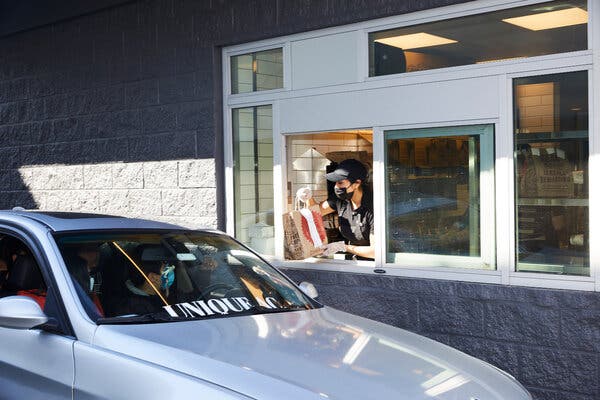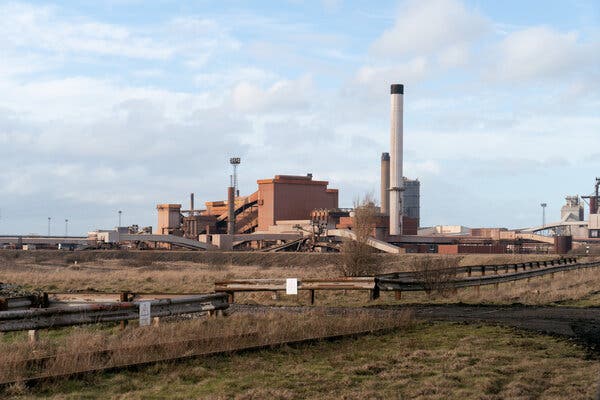The American economy will accelerate nearly twice as fast as expected this year as the expected passage of President Biden’s $1.9 trillion stimulus plan, combined with a rapid vaccine rollout, ignites a powerful recovery from the pandemic, the Organization for Economic Cooperation and Development said Tuesday.
But countries that are stumbling in the pace of their vaccination campaigns, especially those in Europe, risk falling behind in the global recovery as a failure to beat back the spread of the virus forces governments to keep swaths of their economies closed, delaying the chance for people to get back to normal lives, the organization said.
In its half-year outlook, the organization said the United States would expand 6.5 percent this year, up sharply from 3.2 percent forecast in December. The surge in the world’s largest economy will generate enough momentum to help lift global output 5.6 percent, from a 3.4 percent contraction in 2020.
China, which contained the virus earlier than other countries, remains a big global winner, with growth of 7.8 percent forecast.
Although a global recovery is in sight, spending by governments intended to jump-start their economies will have limited impact unless authorities accelerate national vaccine rollouts and relax virus containment measures, the report added. If vaccination programs aren’t fast enough to cut infection rates, or if new variants become more widespread and require changes to vaccines, consumer spending and business confidence would be hit.
“Stimulus without vaccinations won’t be as effective because consumers won’t go out doing normal things,” Laurence Boone, the O.E.C.D.’s chief economist, said in an online news briefing. “It’s the combination of health and fiscal policy that matters.”
That is especially the case for Europe, and Germany and France in particular, where a mix of poor public health management and slow vaccination programs are weighing on a recovery, despite billions in government support. Such spending “won’t be fully effective as long as the economy doesn’t reopen,” Ms. Boone said.
The euro area economy is expected to grow 3.9 percent this year, slightly more than forecast in December but slower than the United States. In Britain, which sped a national vaccination rollout late last year, the economy is expected to grow 5.1 percent, up from a 4.2 percent forecast.
India’s economy is expected to grow 12.6 percent, the organization added.

The basic experience of sitting in a single line of cars, speaking into a sometimes garbled intercom and pulling up to a window to pay for your food before driving away is poised to be demonstrably altered for the first time in decades, Julie Creswell reports for The New York Times.
“The drive-through has been one of those places that hasn’t changed in decades,” said Ellie Doty, the North American chief marketing officer for Burger King. “But with Covid, we’re seeing the dramatic acceleration of directions we were already going.”
Applebee’s is testing its first drive-through in Texarkana, Texas. Shake Shack is experimenting with a number of new designs and plans, including walk-up windows and curbside pickup.
More restaurants are trying to encourage customers to use ordering apps, which improve the accuracy of orders. They are also trying to figure out how to best speed consumers through the drive-through or pickup process.
Some restaurants, like McDonald’s and Burger King, are adding multiple drive-through lanes. Burger King is running three-lane tests in the United States, Brazil and Spain. In the United States and Spain, the third lane is “express” for advance orders made through the app. In Brazil, the lane takes delivery drivers to a pickup area with food lockers or shelves.
Burger King is also looking to propel its drive-throughs into the future with a Big-Brother-like artificial intelligence system, Deep Flame.
Right now, roughly half of Burger King’s drive-throughs with digital menu boards are using Deep Flame’s technology to suggest foods that are particularly popular in the area that day. It also uses outside factors, like the weather, to highlight items like an iced coffee on a hot day.
Burger King is testing a Bluetooth technology that will be able to identify customers in Burger King’s loyalty program and show their previous orders. If a customer ordered a small Sprite and a Whopper with cheese, hold the pickles, the last three visits, Deep Flame will calculate that chances are high that the customer will want the same order again.

Lots of attention is being paid to carbon capture as a way to meet the targets in the 2016 Paris climate agreement. The idea sounds deceptively simple: Divert pollutants before they can escape into the air, and bury them deep in the ground where they can do no harm.
But the technology has proved to be hugely expensive, and it has not caught on as rapidly as some advocates hoped, Stanley Reed reports for The New York Times.
The oil giant BP is leading a project in England to collect emissions by pipeline from a group of chemical plants in northeast England and send it to a reservoir deep under the North Sea. BP hopes it can achieve sufficient scale to make a profitable business.
BP and its partners propose to build a very large electric power station fueled by natural gas near a shuttered steel mill at the mouth of the river. The plant would help replace Britain’s aging fossil-fuel-burning power stations and provide essential backup electricity when the country’s growing fleet of offshore wind farms are becalmed. Equipment would remove the carbon dioxide from the power station’s exhaust.
Pipes would run through the area rounding up more carbon dioxide from a fertilizer plant and a factory that makes hydrogen, which is winning favor as a low-carbon fuel. BP also expects to connect other plants in the area. Pipes would take the carbon dioxide 90 miles out under the North Sea, where it would be pumped below the seabed into porous rocks.
Four other oil giants — Royal Dutch Shell, Norway’s Equinor, France’s Total and Italy’s Eni — are also investors in the plan, although the final go-ahead awaits a financial commitment from the British government. The price for the initial stage could approach $5 billion.






